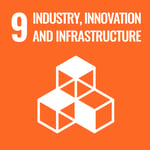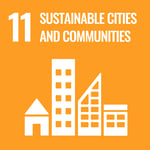Sustainability
Technology that leads to a better future
Sustainability by Nanopower
Sustainability is disrupting the way business gets done. Fortunately, many revenue-increasing technological undertakings lead to more viable solutions
Nanopower's objective is to develop technology that enables environmentally sustainable solutions. Our power savings IC can do just that by reducing energy consumption in various electronic devices.
Sustainability in Nanopower
What is Nanopower doing?
In our quest to enhance and optimize our sustainability efforts, we have the following plan:
- Materiality Analysis: A materiality analysis following the GRI standard was recently conducted. This helps us understand how our actions impact people and the planet. Based on the materiality analysis and selected UN Sustainable Development Goal (SDG) targets, we have made a sustainability strategy and are now action plan.
- UN Global Compact: Nanopower became a member in 2023, as part of its commitment to sustainable and responsible business practices.
- Climate Accounting: The company reports its climate emissions using the internationally recognized GHG protocol. We also set clear targets for reducing our carbon footprint.
- Life-Cycle Assessment: To understand the environmental impact of our product, the nPZero IC, we'll conduct a thorough LCA.

Our technology has direct positive impacts on
Consumption of limited resources
Pollution and energy use from resource extraction
Electronic and battery waste
Operational efficiency
World Economic Forum estimates that 84% of IoT projects have the potential to address the UN’s SDG.

Industry, innovation and infrastructure

The industrial IoT refers to interconnected sensors and other devices networked together with computers' industrial applications. This connectivity allows for data collection, facilitating improvements in productivity and efficiency. Targeting conscious use of natural resources, less waste, leaner processes, and longer life cycles of equipment. It will empower the industry to reach sustainability goals.
#Target 9.2 Promote inclusive and sustainable industrialization 9.4 Upgrade infrastructure and retrofit industries to make them sustainable
Sustainable cities and communities

Smart cities require the collection of data for efficient operations. This requires a sustainable vast infrastructure of reliable IoT sensors, with long battery life as a key element.
#Target 11.6 Reduce the environmental impact of cities, including by paying special attention to air quality
Ensure sustainable consumption and production patterns

Electronic equipment continues to be one of the fastest-growing waste streams. Therefore, circular economy action plans promote products based on their sustainability performance. Nanopower helps companies to reduce WEEE and be compliant with laws and regulations.
#Target 12.5 Substantially reduce waste generation through prevention, reduction, recycling, and reuse
Climate action

Monitoring of the environment is important to document how essential properties of nature change over time due to natural or anthropogenic influence. Wireless IoT systems will play an increasingly important part in the future. Environmental management tools help to predict floods, forest fires, and other natural disasters. Remote battery-powered sensors are essential to such solutions.
#Target 13.1 Strengthen resilience and adaptive capacity to climate-related hazards and natural disasters